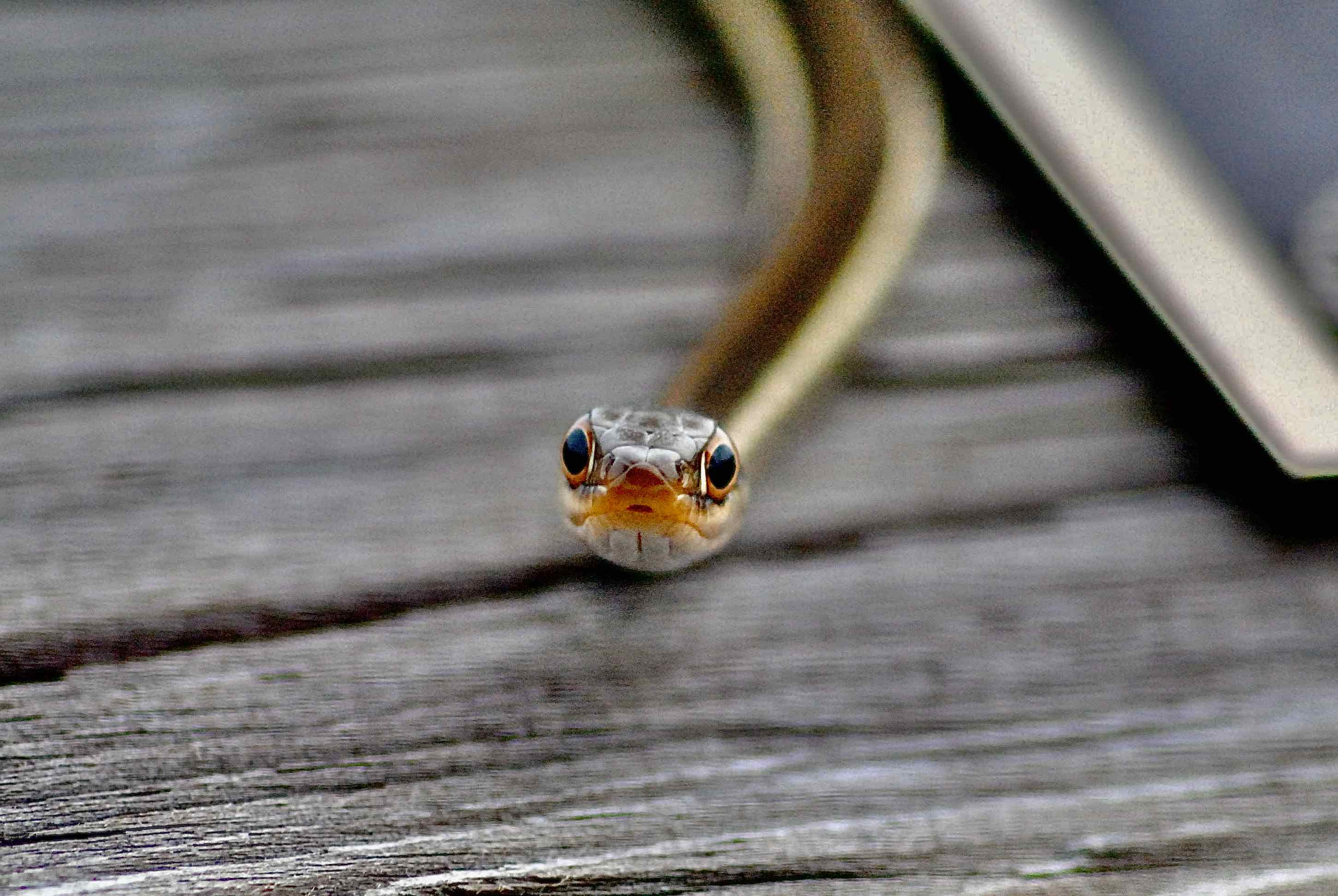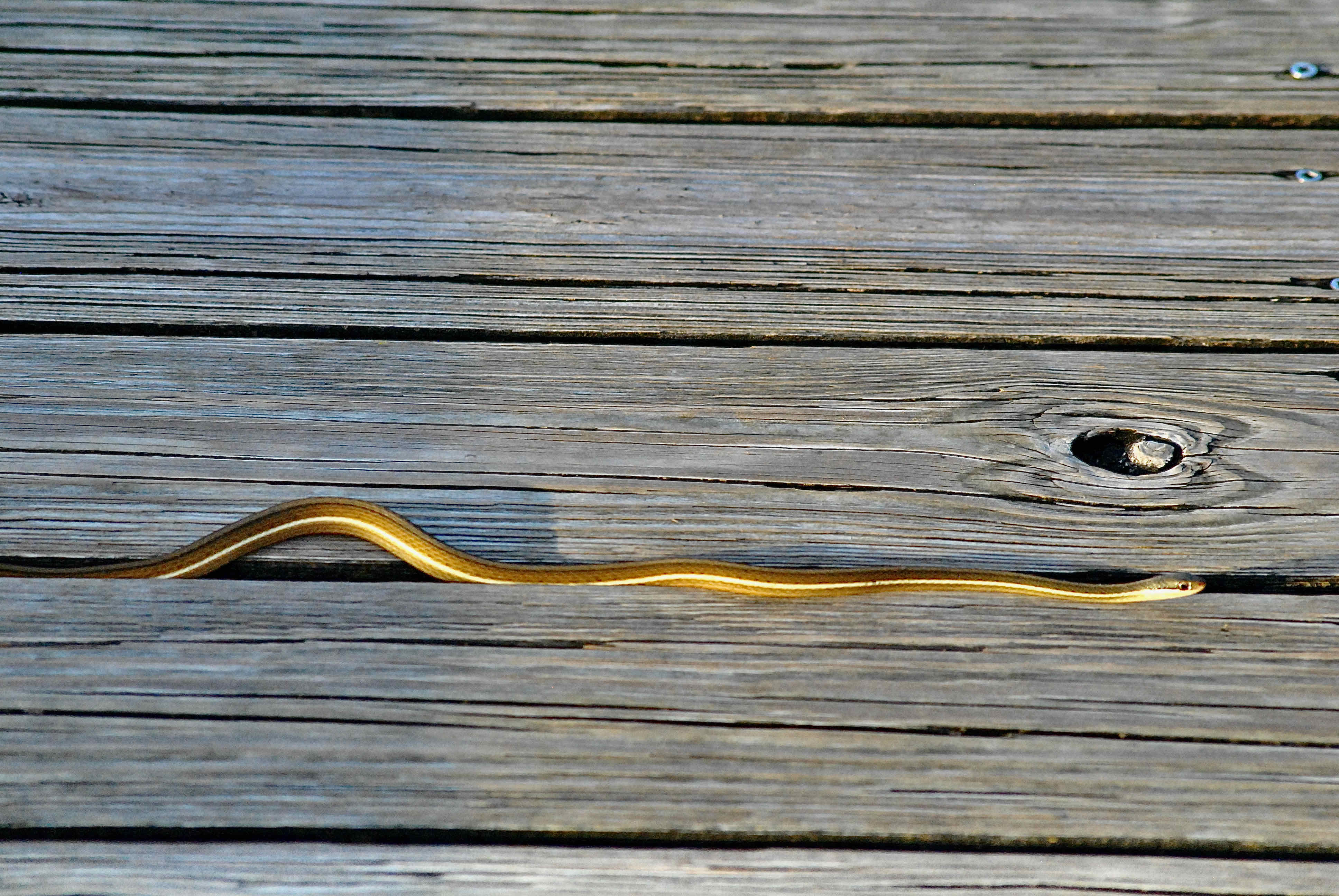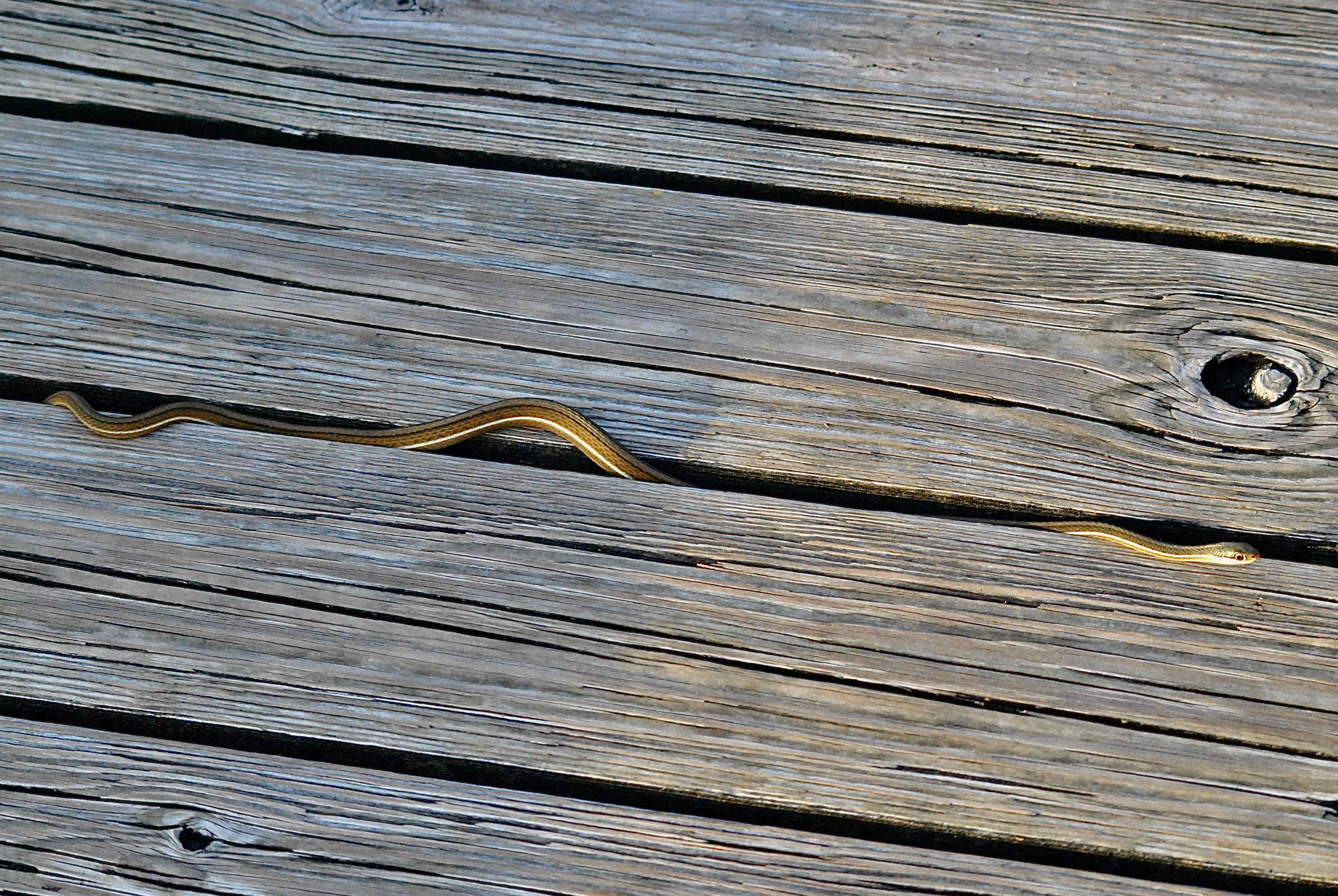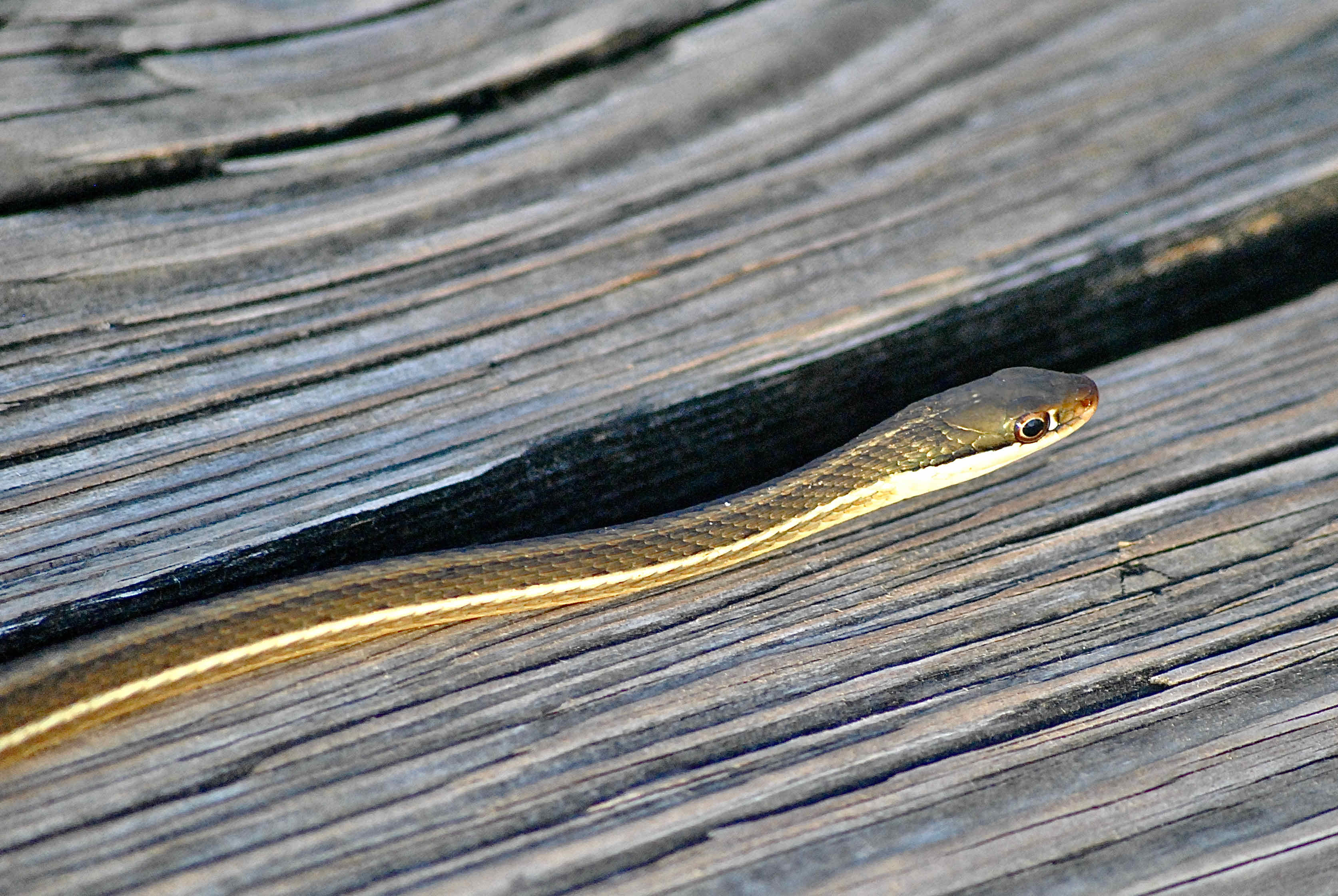
Eastern ribbon snake, photographed at Green Cay Nature Center, Boynton Beach, Palm Beach County, in June 2012.
You're looking death in the face. Really. Deadlier than the black mamba. Larger than the largest Burmese phython. Stealthier than a Philippine viper.
Ok, we just made all that up. The eastern ribbon snake, Thamnophis sauritus, is small and about as harmless as can be. Not only is it nonvenomous, it's extremely unlikely to bite you. The worst it can do is thrash about and produce a foul odor from it's anus if it feels threatened. We did not make that one up. It is stealthy, but it's far, far more likely to use stealth to avoid trouble than it is to confront it.
It is a relative of the garter snake and gets its name from its slender body. Adult ribbon snakes will range between 18 and 34 inches in length, but are so thin that it can easily weave through the planks of a boardwalk, as seen below. Most adult ribbon snakes in Florida are between 20 and 28 inches; the longest ribbon snake ever recorded reached a fairly impressive 40 inches.
The eastern ribbon snake ranges throughout the eastern U.S., including Florida, and into southern Canada. They like wet places — favorite habitats include wet meadows and fields adjacent to bodies of water. They can swim and will use the ability to escape predators. Favorite foods include worms, salamanders, tadpoles, fish, bugs, frogs and toads, and occasionally other snakes.
The color mix can vary somewhat, but ribbon snakes are generally a dull brown, marked by three yellowish stripes — one on each side and one down the back. The combination helps them blend into their surroundings and protects them from a lengthy list of predators. Their heads are wider than their necks, and they have relatively large eyes. Ribbon snakes also have white marks by their eyes and on the cheeks (see the photo above), which helps distinguish them from similar species. Females are slightly larger than males. They are diurnal, or active mostly during the day.
They are reptiles, and like all reptiles, they require the heat of the sun to maintain their body temperature, so they can be seen basking on logs and rocks. In winter, they take refuge in abandoned burrows and hibernate. Unlike most reptiles, ribbon snakes do not lay eggs but rather give live birth. Mating season is April to June, giving birth between July and September. Offspring number between as few as four to as many as 27, each between seven and 10 inches long. They reach maturity before their second year, but might wait until their third year before mating. Ribbon snakes may mate a second time within a year. Not much is known about their lifespans in the wild; in captivity, they've exceeded a decade.
There are four subspecies of ribbon snakes, three of which can be found in different parts of Florida. The variety prevalent in most of Florida— the Peninsula and the Keys — is called the southern, or peninsular ribbon snake and is scientifically known as T.s. sachenii. It can be found as far north as southern North Carolina. One identifying characteristic: the back stripe is brown rather than yellow. The other two found in Florida are the bluestripe ribbon snake, found in the Panhandle and the eastern ribbon snake, found roughly in the Big Bend area of Florida's Gulf Coast.
The ribbon snake population is generally considered secure, but it is protected in portions of its range. Habitat loss is a threat. Ribbon snakes are members of Colubridae, the largest family of snakes in the world.



